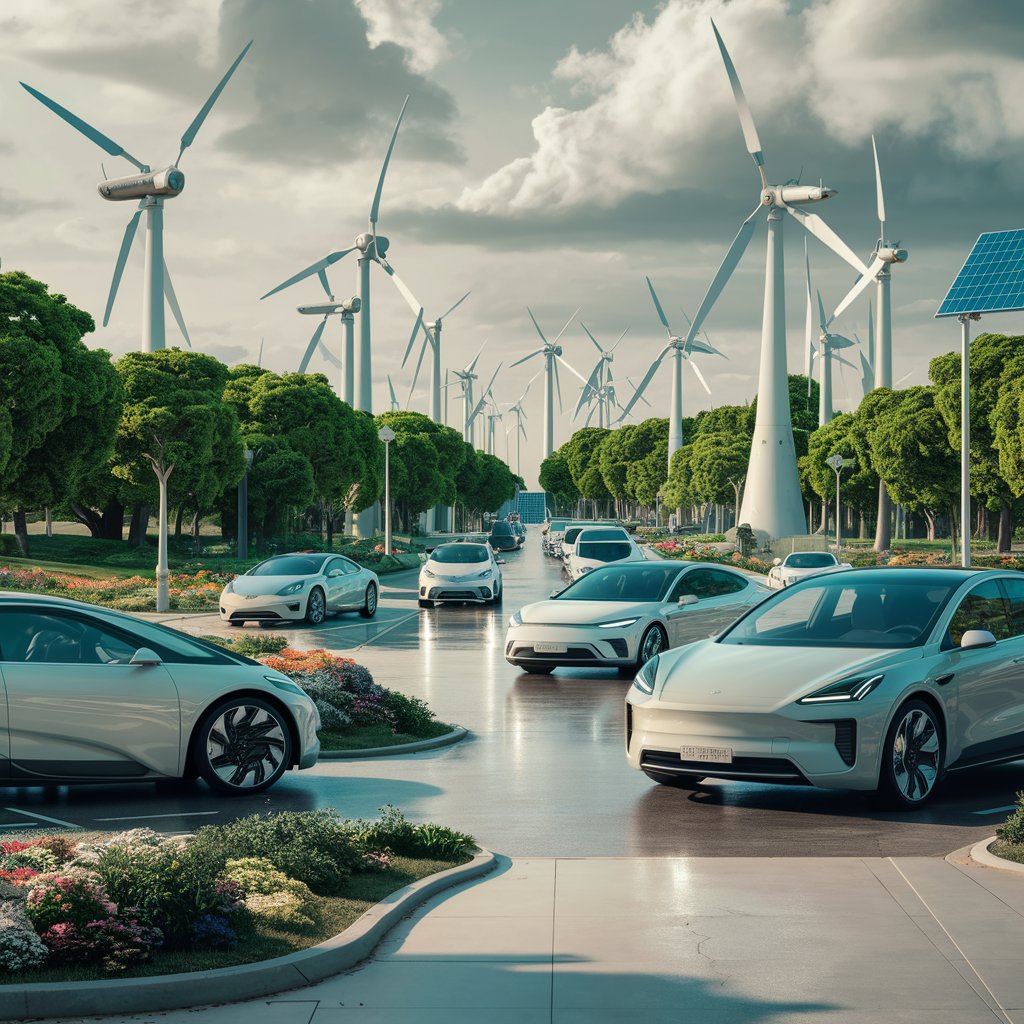The global push towards electrifying transportation is not just about adopting new technology or achieving energy independence; it’s fundamentally about safeguarding our planet. By transitioning from traditional internal combustion engine (ICE) vehicles to electric vehicles (EVs), we can significantly reduce our environmental footprint. This article explores how electrifying transportation benefits the environment, from reducing greenhouse gas emissions to improving air quality and conserving resources.
Reduction in Greenhouse Gas Emissions
- Lower Emissions from Vehicles
- Zero Tailpipe Emissions: EVs produce zero tailpipe emissions, meaning they do not emit harmful pollutants like carbon dioxide (CO2), nitrogen oxides (NOx), and particulate matter (PM). This is in stark contrast to gasoline and diesel vehicles, which are major sources of these pollutants.
- Life Cycle Emissions: Even when considering the entire life cycle of an EV—from manufacturing to disposal—EVs tend to have lower overall emissions than ICE vehicles. As the electricity grid becomes greener with more renewable energy sources, the carbon footprint of EVs will continue to decrease.
- Support for Renewable Energy
- Grid Integration: EVs can be integrated with the electrical grid in ways that support the use of renewable energy. For instance, EVs can be charged during times of high renewable energy production, helping to balance supply and demand.
- Energy Storage: Advanced vehicle-to-grid (V2G) technology allows EVs to store excess renewable energy and feed it back into the grid when needed, enhancing grid stability and reducing reliance on fossil fuels.
Improvement in Air Quality
- Reduced Air Pollution
- Urban Air Quality: In cities, where vehicle density is high, the switch to EVs can significantly reduce the levels of air pollutants. This leads to healthier air, which is particularly beneficial for children, the elderly, and those with respiratory conditions.
- Health Benefits: Improved air quality translates to lower healthcare costs and fewer health issues related to pollution, such as asthma, bronchitis, and heart disease.
- Noise Pollution Reduction
- Quieter Streets: EVs operate much more quietly than ICE vehicles. Reduced noise pollution contributes to better urban living conditions and less stress for residents.
Conservation of Resources
- Energy Efficiency
- Higher Efficiency: EVs are more efficient than ICE vehicles, converting a higher percentage of the energy from the battery to movement. This means less energy is wasted in the form of heat.
- Regenerative Braking: Many EVs feature regenerative braking, which recaptures energy during braking and feeds it back into the battery, further enhancing efficiency.
- Sustainable Materials
- Recycling and Reuse: The EV industry is making strides in using more sustainable materials and improving recycling processes for batteries and other components. This reduces the environmental impact of manufacturing and disposal.
Promotion of Sustainable Practices
- Innovation and Green Jobs
- Technological Advancements: The push for EVs drives innovation in energy storage, renewable energy integration, and sustainable manufacturing practices.
- Job Creation: The growing EV market is creating green jobs in manufacturing, infrastructure development, and maintenance, contributing to economic growth while promoting sustainability.
- Shift in Consumer Behavior
- Increased Awareness: As consumers adopt EVs, there is a greater awareness and demand for sustainable practices in other areas of life, fostering a broader cultural shift towards environmental responsibility.
- Incentivizing Green Choices: Government incentives for EVs often go hand-in-hand with incentives for renewable energy installations like solar panels, encouraging more comprehensive adoption of green technologies.
Global Environmental Impact
- Climate Change Mitigation
- Carbon Reduction Goals: By reducing emissions from one of the largest sources of pollution—transportation—EVs play a crucial role in meeting global carbon reduction targets and mitigating climate change.
- International Cooperation: Countries around the world are recognizing the benefits of electrifying transportation and are collaborating on policies and technologies to accelerate this transition.
- Protection of Ecosystems
- Reduced Oil Dependence: Electrifying transportation reduces the demand for oil, decreasing the environmental damage associated with oil extraction, transportation, and refining, which often devastate ecosystems.
- Preservation of Biodiversity: Lower pollution levels and reduced habitat destruction help protect wildlife and maintain biodiversity.
Conclusion
Electrifying transportation is a vital step towards a sustainable future. The environmental benefits are clear: significant reductions in greenhouse gas emissions, improved air quality, conservation of resources, and the promotion of sustainable practices. As more countries and consumers embrace EVs, we move closer to achieving global environmental goals, mitigating climate change, and preserving our planet for future generations. By supporting the transition to electric vehicles, we are not just adopting new technology—we are committing to a cleaner, healthier, and more sustainable world.
